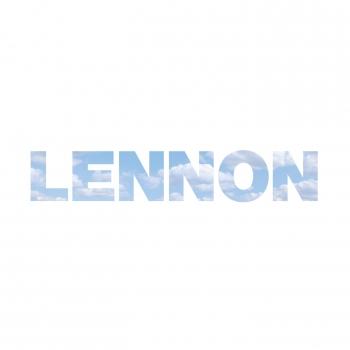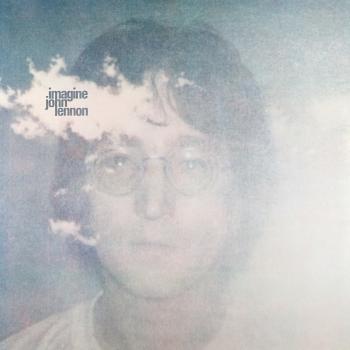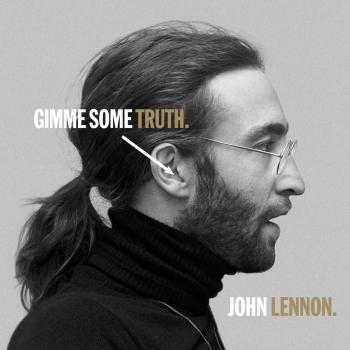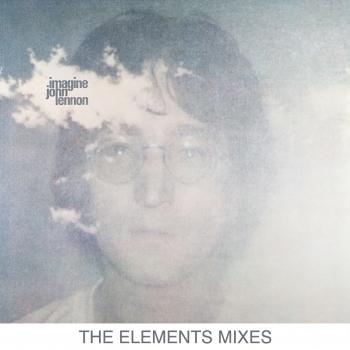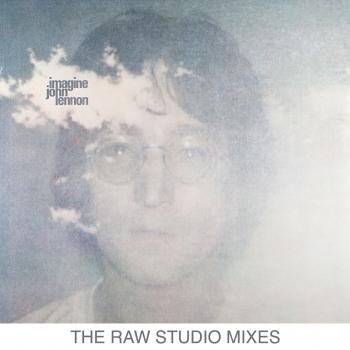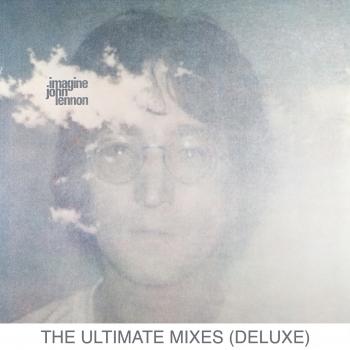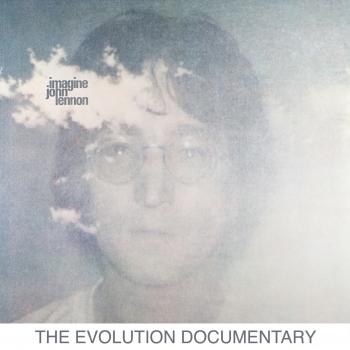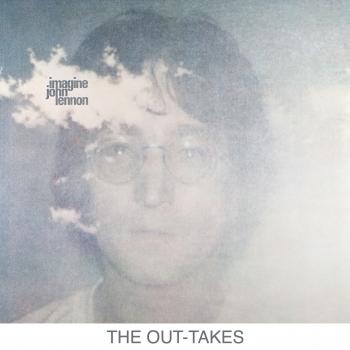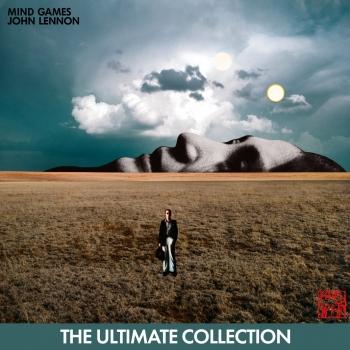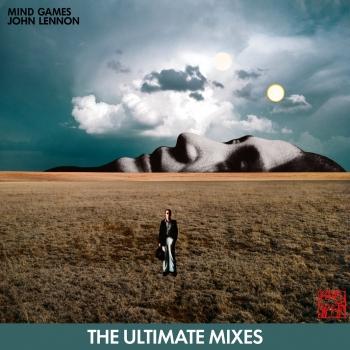Plastic Ono Band (The Ultimate Collection Remastered) John Lennon
Album Info
Album Veröffentlichung:
2020
HRA-Veröffentlichung:
23.04.2021
Das Album enthält Albumcover
Entschuldigen Sie bitte!
Sehr geehrter HIGHRESAUDIO Besucher,
leider kann das Album zurzeit aufgrund von Länder- und Lizenzbeschränkungen nicht gekauft werden oder uns liegt der offizielle Veröffentlichungstermin für Ihr Land noch nicht vor. Wir aktualisieren unsere Veröffentlichungstermine ein- bis zweimal die Woche. Bitte schauen Sie ab und zu mal wieder rein.
Wir empfehlen Ihnen das Album auf Ihre Merkliste zu setzen.
Wir bedanken uns für Ihr Verständnis und Ihre Geduld.
Ihr, HIGHRESAUDIO
- Ultimate Mix:
- 1 Mother (Ultimate Mix) 05:36
- 2 Hold On (Ultimate Mix) 01:52
- 3 I Found Out (Ultimate Mix) 03:38
- 4 Working Class Hero (Ultimate Mix) 03:48
- 5 Isolation (Ultimate Mix) 02:52
- 6 Remember (Ultimate Mix) 04:32
- 7 Love (Ultimate Mix) 03:21
- 8 Well Well Well (Ultimate Mix) 05:56
- 9 Look At Me (Ultimate Mix) 02:54
- 10 God (Ultimate Mix) 04:13
- 11 My Mummy's Dead (Ultimate Mix) 00:48
- 12 Give Peace A Chance (Ultimate Mix) 04:49
- 13 Cold Turkey (Ultimate Mix) 05:00
- 14 Instant Karma! (We All Shine On) (Ultimate Mix) 03:19
- 15 Mother (Take 61 / Out-take / Ultimate Mix) 04:18
- 16 Hold On (Take 2 / Out-take / Ultimate Mix) 02:11
- 17 I Found Out (Take 1 / Out-take / Ultimate Mix) 03:46
- 18 Working Class Hero (Take 1 / Out-take / Ultimate Mix) 03:50
- 19 Isolation (Take 23 / Out-take / Ultimate Mix) 02:51
- 20 Remember (Rehearsal 1 / Out-take / Ultimate Mix) 03:11
- 21 Love (Take 6 / Out-take / Ultimate Mix) 02:36
- 22 Well Well Well (Take 2 / Out-take / Ultimate Mix) 03:35
- 23 Look At Me (Take 2 / Out-take / Ultimate Mix) 02:50
- 24 God (Take 27 / Out-take / Ultimate Mix) 04:06
- 25 My Mummy's Dead (Take 2 / Out-take / Ultimate Mix) 01:15
- 26 Give Peace A Chance (Take 2 / Out-take / Ultimate Mix) 06:01
- 27 Cold Turkey (Take 1 / Out-take / Ultimate Mix) 05:24
- 28 Instant Karma! (We All Shine On) (Take 1 / Out-take / Ultimate Mix) 02:53
- Elements Mix:
- 29 Mother (Elements Mix) 05:00
- 30 Hold On (Elements Mix) 01:53
- 31 I Found Out (Elements Mix) 05:25
- 32 Working Class Hero (Elements Mix) 03:11
- 33 Isolation (Elements Mix) 02:44
- 34 Remember (Elements Mix) 08:38
- 35 Love (Elements Mix) 05:40
- 36 Well Well Well (Elements Mix) 05:57
- 37 Look At Me (Elements Mix) 02:56
- 38 God (Elements Mix) 04:09
- 39 My Mummy's Dead (Elements Mix) 00:53
- 40 Give Peace A Chance (Elements Mix) 04:54
- 41 Cold Turkey (Elements Mix) 05:03
- 42 Instant Karma! (We All Shine On) (Elements Mix) 03:21
- Raw Studio Mix:
- 43 Mother (Take 64 / Raw Studio Mix) 05:12
- 44 Hold On (Take 32 / Raw Studio Mix) 01:52
- 45 I Found Out (Take 3 / Extended / Raw Studio Mix) 05:34
- 46 Working Class Hero (Take 9 / Raw Studio Mix) 04:08
- 47 Isolation (Take 29 / Raw Studio Mix) 02:52
- 48 Remember (Take 13 / Raw Studio Mix) 04:59
- 49 Love (Take 37 / Raw Studio Mix) 04:27
- 50 Well Well Well (Take 4 / Extended / Raw Studio Mix) 06:47
- 51 Look At Me (Take 9 / Raw Studio Mix) 03:08
- 52 God (Take 42 / Raw Studio Mix) 04:27
- 53 My Mummy's Dead (Take 1 / Raw Studio Mix) 00:53
- 54 Give Peace A Chance (Take 4 / Extended / Raw Studio Mix) 06:35
- 55 Cold Turkey (Take 2 / Raw Studio Mix) 05:06
- 56 Instant Karma! (We All Shine On) (Take 10 / Raw Studio Mix) 03:32
- Evolution Documentary:
- 57 Mother (Evolution Documentary) 09:16
- 58 Hold On (Evolution Documentary) 08:46
- 59 I Found Out (Evolution Documentary) 06:01
- 60 Working Class Hero (Evolution Documentary) 03:34
- 61 Isolation (Evolution Documentary) 09:39
- 62 Remember (Evolution Documentary) 07:02
- 63 Love (Evolution Documentary) 07:37
- 64 Well Well Well (Evolution Documentary) 04:50
- 65 Look At Me (Evolution Documentary) 05:51
- 66 God (Evolution Documentary) 08:10
- 67 My Mummy's Dead (Evolution Documentary) 01:36
- 68 Give Peace A Chance (Evolution Documentary) 07:29
- 69 Cold Turkey (Evolution Documentary) 04:51
- 70 Instant Karma! (We All Shine On) (Evolution Documentary) 08:48
- Home Demo:
- 71 Mother (Home Demo) 05:00
- 72 Hold On (Studio Demo) 02:18
- 73 I Found Out (Home Demo) 04:09
- 74 Working Class Hero (Studio Demo) 03:50
- 75 Isolation (Studio Demo) 02:55
- 76 Remember (Studio Demo) 05:24
- 77 Love (Home Demo) 02:39
- 78 Well Well Well (Home Demo) 01:16
- 79 Look At Me (Home Demo) 02:49
- 80 God (Home Demo) 03:52
- 81 My Mummy's Dead (Home Demo) 01:18
- 82 Give Peace A Chance (Home Demo) 02:40
- 83 Cold Turkey (Home Demo) 03:34
- 84 Instant Karma! (We All Shine On) (Studio Demo) 03:33
- 85 Johnny B. Goode (Jam) 01:02
- 86 Ain't That A Shame (Jam) 01:54
- Jam:
- 87 Hold On (Jam 1) 02:22
- 88 Hold On (Jam 2) 01:37
- 89 Glad All Over (Jam) 01:12
- 90 Be Faithful To Me (Jam) 00:44
- 91 Send Me Some Lovin' (Jam) 01:06
- 92 Get Back (Jam) 01:05
- 93 Lost John (Jam 1) 01:56
- 94 Goodnight Irene (Jam) 01:51
- 95 You'll Never Walk Alone (Jam) 01:44
- 96 I Don't Want To Be A Soldier Mama, I Don't Wanna Die (Jam 1) 03:30
- 97 It'll Be Me (Jam) 01:07
- 98 Honey, Don't! (Jam) 01:39
- 99 Elvis Parody (Don't Be Cruel, Hound Dog, When I'm Over You) (Jam) 02:48
- 100 Matchbox (Jam) 01:57
- 101 I've Got A Feeling (Jam) 00:20
- 102 Mystery Train (Jam) 02:44
- 103 (You're So Square) Baby I Don't Care (Jam) 00:29
- 104 I Don't Want To Be A Soldier Mama, I Don't Wanna Die (Jam 2) 01:46
- 105 Lost John (Jam 2) 00:48
- 106 Don't Worry Kyoko (Mummy's Only Looking For A Hand In The Snow) (Jam) 02:07
- Raw Studio Mix:
- 107 Mother (Take 91 / Out-take / Raw Studio Mix) 04:00
- 108 Hold On (Take 18 / Out-take / Raw Studio Mix) 02:07
- 109 I Found Out (Take 7 / Out-take / Raw Studio Mix) 07:51
- 110 Working Class Hero (Take 10 / Out-take / Raw Studio Mix) 03:44
- 111 Isolation (Take 1 / Out-take / Raw Studio Mix) 00:35
- 112 Remember (Take 1 / Out-take / Raw Studio Mix) 02:53
- 113 Love (Take 9 / Out-take / Raw Studio Mix) 02:34
- 114 Well Well Well (Take 5 / Out-take / Raw Studio Mix) 05:06
- 115 Look At Me (Take 3 / Out-take / Raw Studio Mix) 03:12
- 116 God (Take 1 / Out-take / Raw Studio Mix) 02:28
- 117 My Mummy's Dead (Take 2 / Out-take / Raw Studio Mix) 01:19
- 118 Give Peace A Chance (Take 4 / Stripped Down / Extended / Raw Studio Mix) 06:33
- 119 Cold Turkey (Take 2 / Stripped Down / Raw Studio Mix) 05:01
- 120 Instant Karma! (We All Shine On) (Take 5 / Out-take / Raw Studio Mix) 03:11
Info zu Plastic Ono Band (The Ultimate Collection Remastered)
Vom eindringlichen Klang der Beerdigungsglocken und dem emotionalen Wehklagen auf dem Opener “Mother” war klar, dass John Lennons erstes Studioalbum als Solokünstler nicht mit seinen bisherigen Arbeiten zu vergleichen war. Aufgenommen wurde John Lennon/Plastic Ono Band 1970, kurz nach dem Ende der Beatles. John entledigte sich auf dem Album jeglichen Beiwerks und schuf Raum für eine Art kreativen Exorzismus, einen fast unerträglich ehrlichen Seelenstriptease, der mehr als nur eine Offenbarung bereithielt. Als Inspiration diente die Urschreitherapie, die John und seine Frau Yoko Ono mit Dr. Arthur Janov durchführten. Mit der minimalistisch besetzten Plastic Ono Band – mit Ringo Starr am Schlagzeug, Klaus Voorman am Bass und dem Produzenten Phil Spector – stellte sich John auf dem persönlichsten Album seiner Karriere seinen Dämonen, verkündete seine Liebe für seine Frau, ging mit falschen Vorbildern ins Gericht und beerdigte einen Traum. Heute gilt das Album als absolute Krönung seiner Solokarriere, der Moment, in dem der größte Rockstar der Welt seine Seele öffnete und allen zu Füßen legte – ehrlich und revolutionär, wie sie im Kern war.
Nun feiern Yoko Ono Lennon und Capitol/UMe das 50-jährige Jubiläum von John Lennons bahnbrechendem und einflussreichen Meisterwerk mit der John Lennon/Plastic Ono Band – The Ultimate Collection. Es ist ein wirklich intensives Hörerlebnis und eine ausführliche Entdeckungsreise durch ein Album, das John selbst als “das Beste, was ich je getan habe” beschrieb. Das Projekt ist von Yoko Ono Lennon autorisiert, die auch die Produktion und den Kreativprozess begleitete. Das zuständige Audioteam war dasselbe, das auch an der 2018 erschienen und von der Kritik gefeierten Imagine – The Ultimate Collection gearbeitet hat, darunter der dreifache GRAMMY-Gewinner, Engineer Paul Hicks und die Mixer/Engineers Rob Stevens und Sam Gannon. Die Ultimate Collection holt den Zuhörer direkt ins Studio, wo er die Aufnahmen, die 1970 in den EMI Studios 2 & 3 in der Abbey Road stattfanden, genau nachverfolgen kann. Auch Lennons nach dem Ende der Beatles entstandene Singles “Give Peace A Chance”, “Cold Turkey” und “Instant Karma! (We All Shine On)” werden hier nochmal präsentiert. Von der ersten Idee bis zum finalen Master zeigen unveröffentlichte und rare Demos, Proben, Outtakes, Jams und Gespräche im Studio den Entstehungsweg dieser unvergesslichen Songs. Insgesamt enthält das Set sagenhafte 35 bisher unveröffentlichte Demos und Outtakes.
Auf sechs Alben enthält diese historische, geremixte und neu gemasterte Collection insgesamt 159 Tracks, also elf Stunden Musik; dazu kommen zwei Postkarten (“Who Are The Plastic Ono Band?” und “You Are The Plastic Ono Band”), ein “War Is Over!”-Poster und ein umfangreiches, 132 Seiten starkes Hardcoverbuch mit Songtexten, seltenen Fotos, Memorabilia und ausführlichen Notizen. Entworfen und bearbeitet wurde das Buch von Simon Hilton, dem Compilation Producer und Production Manager der Ultimate Collection-Serie. Es erzählt die Geschichte hinter jedem einzelnen Song und beschreibt den Entstehungsprozess des Albums anhand älterer und brandneuer Interviews in den Worten von John & Yoko und von einigen anderen Beteiligten.
Im Vorwort schreibt Yoko: “Was John und ich an den Alben mit der Plastic Ono Band besonders mochten, war, dass wir der Welt damit eine ungeschönte, grundlegende und absolut aufrichtige Realität anboten. Wir beeinflussten andere Künstler, machten ihnen Mut und machten eine diese Kombination aus Verletzlichkeit und Stärke, die zu der Zeit in der Gesellschaft nicht auf viel Verständnis stieß, zu etwas, auf das man stolz sein konnte. Für einen Beatle war es geradezu revolutionär, zu sagen: ‘Schaut, ich bin ein Mensch, ich bin echt’. Das hat John eine Menge Überwindung gekostet.”
John Lennon, Gesang, Gitarre, Klavier, Orgel
Ringo Starr, Schkagzeug
Klaus Voormann, Bass
Phil Spector, Klavier (7)
Billy Preston, Klavier (10)
Digitally remastered - Half-Speed Mastered
John Lennon
If John Lennon had only been one of the four members of the Beatles, his artistic immortality would already have been assured. The so-called “smart Beatle,” he brought a penetrating intelligence and a stinging wit both to the band’s music and its self-presentation. But in such songs as “Strawberry Fields Forever,” “Norwegian Wood (This Bird Has Flown),” “Rain” and “In My Life,” he also marshaled gorgeous melodies to evoke a sophisticated, dreamlike world-weariness well beyond his years. Such work suggested not merely a profound musical and literary sensibility – a genius, in short — but a vision of life that was simultaneously reflective, utopian and poignantly realistic.
While in the Beatles, Lennon displayed an outspokenness that immersed the band in controversy and helped redefine the rules of acceptable behavior for rock stars. He famously remarked in 1965 that the Beatles were “more popular than Jesus” – a statement that was more an observation than a boast, but that resulted in the band’s records being burned and removed from radio station playlists in the U.S. He criticized America’s involvement in Vietnam, and, as the Sixties progressed, he became an increasingly important symbol of the burgeoning counterculture.
But it was only after the breakup of the Beatles in 1970 that the figure the world now recognizes as “John Lennon” truly came into being. Whether he was engaging in social activism; giving long, passionate interviews that, once again, broadened the nature of public discourse for artists; defining a new life as a self-described “househusband;” or writing and recording songs, Lennon came to view his life as a work of art in which every act shimmered with potential meaning for the world at large. It was a Messianic attitude, to be sure, but one that was tempered by an innate inclusiveness and generosity. If he saw himself as larger than life, he also yearned for a world in which his ego managed at once to absorb everyone else and dissolve all differences among people, leaving a Zen-like tranquility and calm. “You may say I’m a dreamer, but I’m not the only one,” he sang in “Imagine,” which has become his best-known song and an international anthem of peace. “I hope someday you’ll join us, and the world will live as one.”
Such imagery, coupled with the tragedy of his murder in 1980, has often led to Lennon’s being sentimentalized as a gentle prince of peace gazing off into the distance at an Eden only he could see. In fact, he was a far more complex and difficult person, which, in part, accounts for the world’s endless fascination with him. Plastic Ono Band (1970), the first solo album he made after leaving the Beatles, alternates songs that are so emotionally raw that to this day they are difficult to listen to with songs of extraordinary beauty and simplicity. Gripped by his immersion in primal-scream therapy, which encouraged its practitioners to re-experience their most profound psychic injuries, Lennon sought in such songs as “Mother” and “God” to confront and strip away the traumas that had afflicted his life since childhood.
And those traumas were considerable. Lennon’s mother, Julia, drifted in and out of his life during his childhood in Liverpool – he was raised by Julia’s sister Mimi and Mimi’s husband, George – and then died in a car accident when Lennon was seventeen. His father was similarly absent, essentially walking out on the family when John was an infant. He disappeared for good when Lennon was five, only to return after his son had become famous as a member of the Beatles. Consequently, Lennon struggled with fears of abandonment his entire life. When he repeatedly cries, “Mama, don’t go/Daddy come home,” in “Mother,” it’s less a performance than a scarifying brand of therapeutic performance art. And in that regard, as well as many others, it revealed the influence of Yoko Ono, whom Lennon had married in 1969, leaving his first wife, Cynthia, and their son Julian in order to do so.
The minimalist sound of Plastic Ono Band was significant too. Lennon had come to associate the elaborate musical arrangements of much of the Beatles’ later work with Paul McCartney and George Martin, and he consciously set out to purge those elements from his own work. Co-producing with Ono and the legendary Phil Spector, he built a sonic environment that could not have been more basic – guitar, bass, drums, the occasional piano — whatever was essential and absolutely nothing more. Lyrically, he turned away from the psychedelic flights and Joycean wordplay of such songs as “I Am the Walrus” and “Lucy in the Sky With Diamonds” – as well as his books, In His Own Write and A Spaniard in the Works — and toward a style in which unadorned, elemental speech gathered poetic force through its very directness.
On his next album, Imagine (1971), Lennon felt confident enough to reintroduce some melodic elements reminiscent of the Beatles into his songs. Working again with Ono and Spector, he retains the eloquent plainspokenness of Plastic Ono Band, but allows textural elements such as strings, to create more of a sense of beauty. The album’s title track alone ensured its historical importance; it is a call to idealism that has provided solace and inspiration at every moment of social and humanitarian crisis since it was written.
From there Lennon turned to a style that was a sort of journalistic agit-prop. Sometime In New York City (1972) is as outward-looking and blunt as Imagine was, for the most part, soft-focused and otherworldly. As its title suggests, the album reflects Lennon’s immersion in the drama and noise of the city to which he had moved with Yoko Ono. And as its cover art suggests, the album is something like a newspaper – a report from the radical frontlines on the political upheavals of the day. His activism would create enormous problems for Lennon, however. The Nixon administration, paranoid about the possibility that a former Beatle might become a potent leader and recruiting tool of the anti-war movement, attempted to have Lennon deported. Years of legal battles ensued before Lennon finally was awarded his green card in 1976.
Lennon’s political struggles unfortunately found their match in his personal life. He and Ono split up in the fall of 1973, shortly before the release of his album, Mind Games. He moved to Los Angeles and later described the eighteen months he spent separated from Ono as his “lost weekend,” a period of wild indulgence and artistic drift. Like Mind Games, the albums he made during this period, Walls and Bridges (1974) and Rock N Roll (1975), are the expressions of a major artist seeking, with mixed results, to recover his voice. None of them lack charm, and their high points include the lovely title track of Mind Games; Walls and Bridges’ “Whatever Gets You Through the Night,” a rollicking duet with Elton John that gave Lennon his first number-one single as a solo artist; and the sweet nostalgia of Rock N Roll, a covers album that was Lennon’s tribute to the musical pioneers of his youth. But none of those albums rank among his greatest work.
In 1975, Lennon reunited with Ono, and their son Sean was born later that year. For the next five years, Lennon withdrew from public life, and his family became his focus. Then, in 1980, he and Ono returned to the studio to work on Double Fantasy, a hymn to their life together with Sean. The couple was plotting a full-fledged comeback – doing major interviews to support the album’s release, recording new songs for a follow-up, planning a tour. Then, shockingly, Lennon was shot to death outside the apartment building where he and Ono lived on the night of December 8, 1980. (Anthony DeCurtis). Source: www.johnlennon.com
Dieses Album enthält kein Booklet










